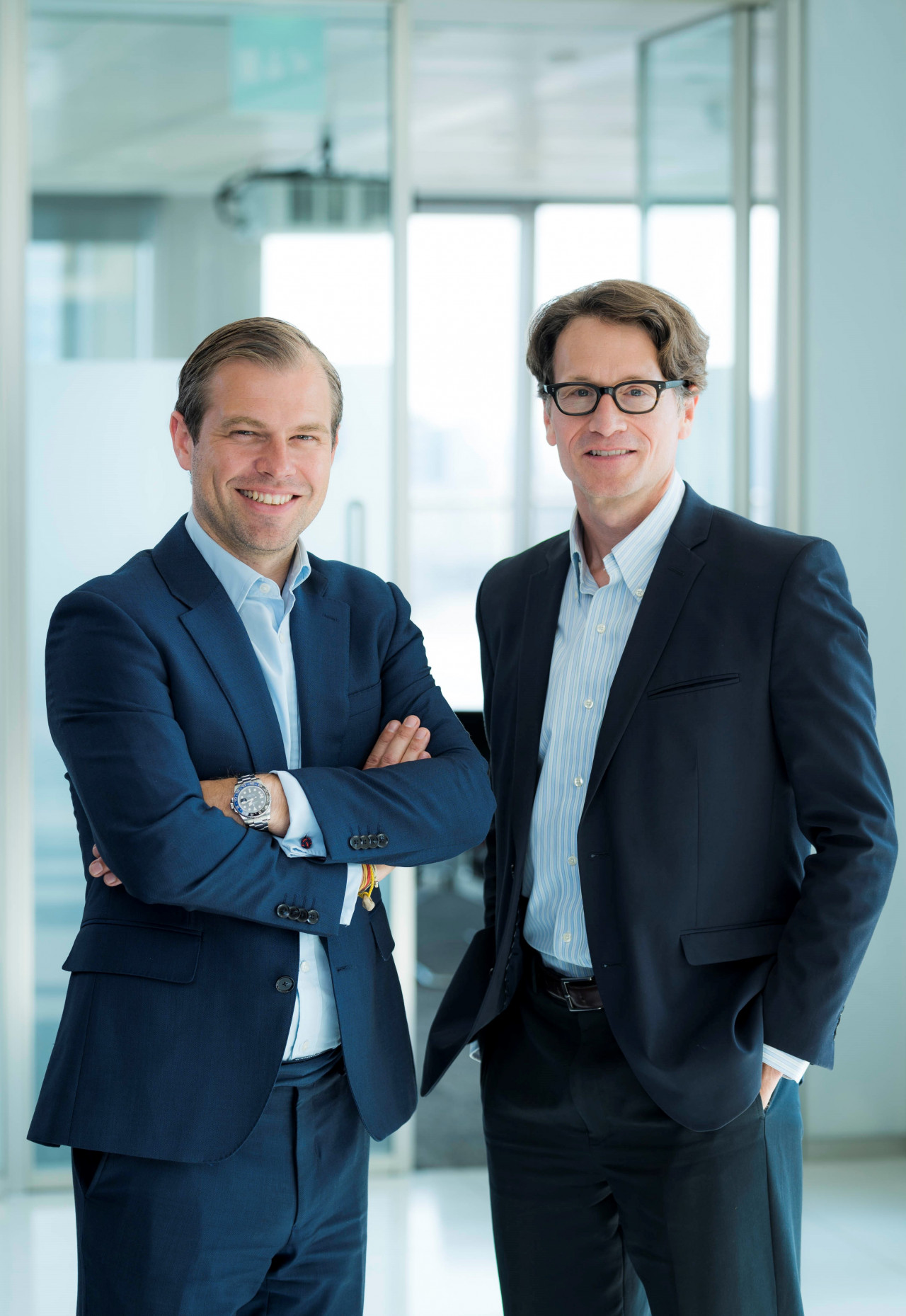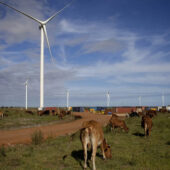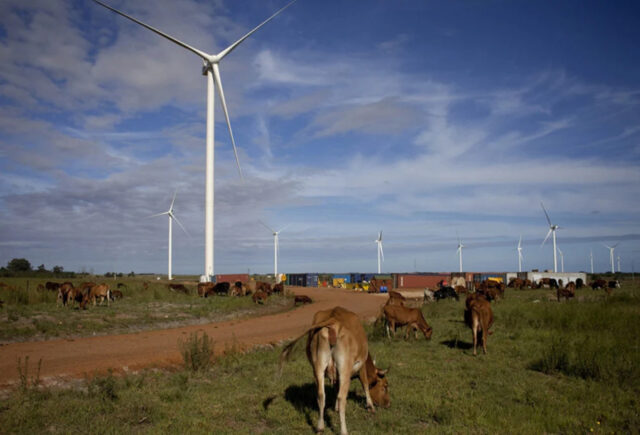Ed Lees, Co-Head Environmental Strategies BNPP AM, forms half of one of the most successful partnerships in impact investing. He explains how investing in ‘green companies’ and shorting ‘brown companies’ can force change.

CV
- Co-Head Environmental Strategies, BNPP AM, 2019 – present
- Co-Founder, Sustainable Solutions, 2017-18
- Co-Founder, North Shore Partners, 2012-17
- Managing Director, UBS, 2011-12
- Co-founder, Clear River Capital, 2009-11
- Managing Director, Goldman Sachs International, 2000-2009
Smart-talking American Ed Lees met his long-time Danish business partner Ulrik Fugmann at American investment bank Goldman Sachs twenty years ago. Their highly successful partnership has taken them through various business ventures.
Lees, Co-Head Environmental Strategies at BNPP AM, tells Impact Investor the duo share “a common outlook and similar personalities. We’re both open-minded workaholics that listen to each other.” Their partnership has mastered the roller-coaster world of hedge fund management, with Fugmann providing more of the top-down/macro trading input, and Lees the deep-diving analysis and ‘quants’.
They have one other thing in common. Both of them are committed environmentalists. Two years ago, this conviction led them to consider setting up another independent venture together. Then at the eleventh hour, they were swept up by French finance giant BNP Paribas Asset Management (BNPP AM), which manages assets of €26bn in sustainable thematic funds.
The pair never looked back. “We quickly realised being part of BNPP would enable us to ‘scale up’ quickly and have more impact,” Lees says.
In the last two years, the pair have started three major funds. The Energy Transition Fund, their flagship fund, has some €3.2bn in assets under management. The fund targets a range of green energy themes, including transport electrification, industrial energy efficiency, and smart grids.
It is “playing a major role in bringing capital to entrepreneurs creating change,” says Lees. Since its launch in September 2019, it has delivered an impressive return of 189%.
Lees and Fugmann launched their second fund, the Earth fund, last summer. Earth stands for Environmental Absolute Return Thematic hedge fund, and somewhat unusually, it trades long and short positions in energy, materials, agriculture, and industrial companies across both developed and emerging markets. It is worth some €521mn and is up 33% in the last year.

‘Go long green, but short brown’
“The ability to be long ‘green’ companies and short ‘brown’ offers investors an interesting twist on the usual ESG investment options,” said Lees. He is also convinced that it “goes to the core of how we think about our impact” because “investing in ‘the good,’ and shorting ‘the bad’ puts pressure on management to change.”
This strategy may force car manufacturers to switch more quickly to electric vehicles, or steel companies to change their manufacturing process, explains Lees. This hands-on approach ties in well with the BNPP-wide policy of active stewardship.
Lees tells us he very much supports John Elkington’s theory that this is a pivotal moment for capitalism “and that the opportunities for investors are enormous.” When talking about the shrinking potential returns on carbon-related industries, he says “it’s simple – do the math.”
New Restoration Fund
The pair’s latest initiative is The Paribas Ecosystem Restoration Fund, a thematic fund offering exposure to companies engaged in the restoration and preservation of global ecosystems and natural capital.
“Decarbonisation is important, indeed vital, but too often investors have concentrated on that theme at the expense of an equally important one – biodiversity,” says Lees.
The World Economic Forum gives us a frightening catalogue of the damage we are doing to our own planet. Since 1970, we have destroyed 32% of the world’s forest area and 85% of its wetlands. Some 50% of the world’s coral reef systems have disappeared and there has been, on average, a 60% decline in vertebrate species.
This is corroborated by research by the World Wide Fund for Nature, which shows that the global population of mammals, birds, fish, amphibians, and reptiles has fallen by an average of 68% since 1970.
“To me, enormous changes are going on in the global economy, and a lot of smart entrepreneurs are creating new ideas,” says Lees. But like similar changes in the past, “not all companies will make it. You need very active stock picking to succeed.”
‘High conviction portfolio’
Lees sees the total investable universe as some 4,000 companies, although realistically only about half of these would ever interest him. Just over a thousand in energy transition and somewhat less than that in biodiversity. The new Restoration Fund will be a high conviction portfolio, which Lees tells us is currently just over 40 stocks but may hold more as it grows.
The fund has three main themes. Aquatic ecosystems – water pollution control, water treatment and sustainable packaging, aquaculture, efficient irrigation systems and flood control solutions.
Terrestrial ecosystems – technologies relating to alternative protein, sustainable agriculture, forestry, and plantations. And finally, Urban ecosystems – environmental services, green buildings, recycling, waste management and alternative modes of transport.
Regulatory Change
Lees says that “the investment environment for our approach has never been better.” He cites the hefty return the Energy Transition fund has chalked up, reflecting the growing consensus of the urgency for climate action. He also salutes the actions of regulators. “We are at last seeing globally coordinated action.”
Lees cites recent moves by the UN which is seeking to establish “a global biodiversity framework that will provide the basis for the next 10 years of action to protect nature and reverse nature loss.”
In addition the European Central Bank (ECB) last year released a 13-point checklist of supervisory expectations, saying “how it expects institutions to consider climate-related and environmental risks – as drivers of established categories of prudential risks – when formulating and implementing their business strategy and governance and risk management frameworks.” Similarly, in the States, the SEC Chair Gary Gensler has pledged to “move expeditiously.”
The investor believes there are considerable opportunities for green investors in the US, as the country “catches up” with what is going on in Europe. He wants the new fund to be very much global in its outlook; “after all this is a global problem.” And he says this definitely includes China.
Pressed on the mixed record of that country on sustainability, he explains to us his thinking. “China is responsible for a lot of the world’s current climate problem, and they need to change that. They may point to carbon emissions per capita, but this is not a relative game, it is an absolute one. And we are clearly moving in the wrong direction.”
However, Lees talks of a ‘barbell’ situation. Because at the same time China is a leader in many of the world’s green industries. “The world only has solar power because of China.”





